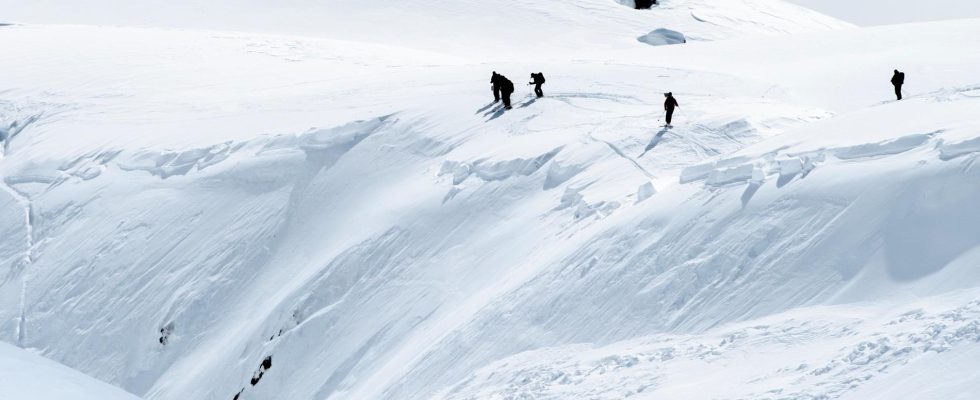unsaveSave
expand-left
full screen Rescue work after an avalanche near Fiesch in Switzerland in 2018. Photo: Jean-Christoph Bott/AP/TT
Eighty percent of Swedes who died in avalanche accidents during the 21st century have died abroad, most in the Alps.
– When Swedes go down to the Alps and want to get as much skiing as possible in a short time, it can mean a danger in itself, says the Swedish Environmental Protection Agency’s avalanche expert Petter Palmgren ahead of the upcoming weeks of sports holidays.
Finding safe off-piste skiing is much easier in Sweden than in, for example, the Alps, believes Petter Palmgren, although of course there are risks in Sweden as well. The main reason is the clearly steeper and narrower mountains of the Alps.
Since the winter of 2000/2001, 58 Swedes have lost their lives in avalanche accidents, according to the Swedish Environmental Protection Agency’s avalanche forecast service. Eight out of ten of them have died abroad, above all in the Alps but also in Norway, Canada, Chile and India.
The death figures since 2000/2001 give an average of 2.5 deaths per season, but in the last two years alone, twelve Swedish citizens have died in avalanches.
The right equipment
For those who stick to the pisted slopes, no direct avalanche knowledge is required. If you plan to stay outside the pistes, however, there are a few things you should be aware of.
Petter Palmgren recommends that you take avalanche training and bring avalanche equipment such as a shovel, avalanche transmitter and probe so that your fellow riders have a chance to find and dig you out if you are buried in the snow.
– In avalanches, it’s those you go with who have the best and often the only chance to dig one out. Helmets are also part of the safety equipment because riding in an avalanche involves a lot of violence and there is a great risk of killing yourself, he says.
Some form of navigation equipment, such as a map and compass or GPS, is also important to have so that you don’t end up wrong and forced to take a less safe route to get home.
Read the avalanche forecast
Before going off-piste, you should update yourself on the avalanche forecast, which can be done at lavinprognoser.se for Swedish mountains and avalanches.org for European mountain countries. Finally, a general tip: the steeper the slope, the higher the risk of an avalanche.
– If you stay below a 30 degree slope and in the areas below, the risks are small, says Petter Palmgren.
FACT Advice for anyone planning a trip in avalanche terrain
Take an avalanche training course: An avalanche training course provides knowledge about avalanche terrain, how safe tours can be planned and how effective peer rescue is carried out.
Always have safety equipment: Avalanche equipment, reinforcement garments, extra energy and navigation aids should always be included in the pack.
Read the avalanche and weather forecast: The avalanche forecast provides information about the avalanche danger in a certain mountain area. Together with the weather forecast, it is an important decision-making basis for safer stays in the mountains.
Plan together with fellow riders: Discuss how steep it is safe to ride on a given day, if there is direction and elevation in the terrain with greater avalanche danger. In several avalanche accidents in the last two years, more than one person has been involved and more than one person has died.
Analyze dangers in the terrain before the ride: Many who are killed in avalanches do so in collisions with trees in the direction of the avalanche. Reading the terrain and anticipating risks is almost as important as measuring slope before an off-piste ride.
Source: Swedish Environmental Protection Agency
Read more
